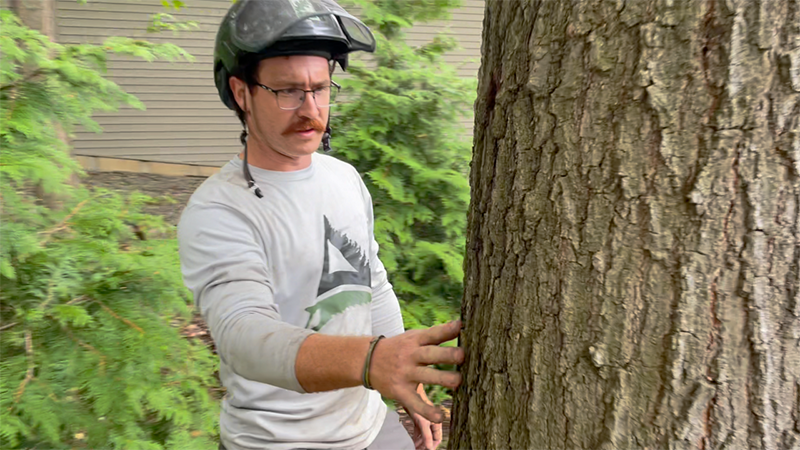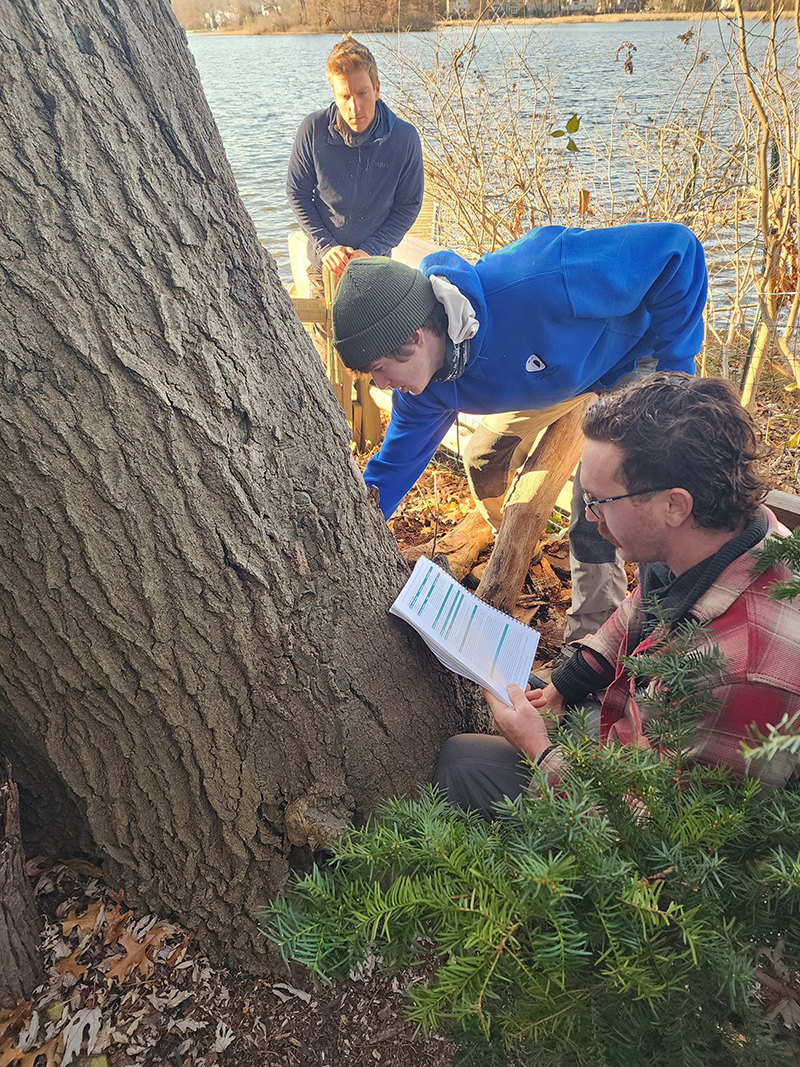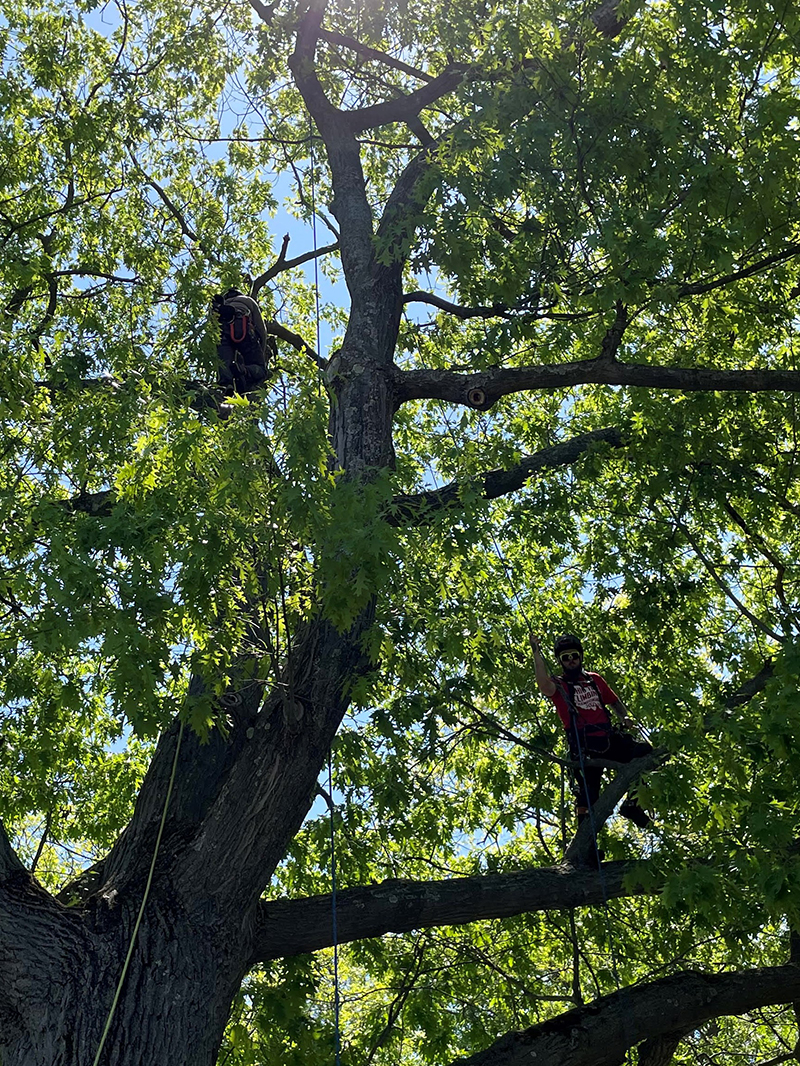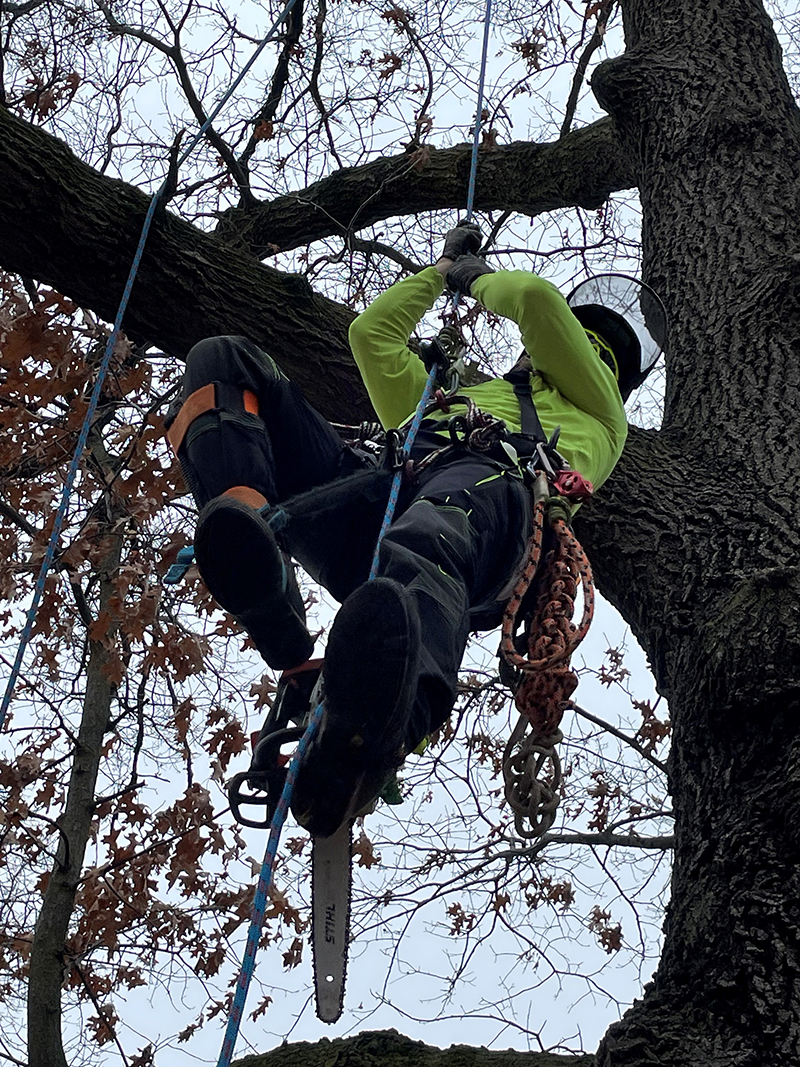Oakland County is known for many things, but the abundance of oak trees is often the highlight of the area’s gorgeously green landscapes.
The county even owes its name to these large and looming trees of the locale.
While oaks thrive in Oakland County, a notorious sickness can threaten these prized trees: oak wilt.

For oak tree owners, it’s crucial to learn about the deadly oak wilt.
If left untreated, it will not only chip away at your tree’s life but will also wipe out nearby oaks.
Below, we’ll explain oak wilt, how to identify its symptoms, and how to protect your prized trees from this disease.
The Threat of Oak Wilt
Oak wilt is a lethal disease that targets oak trees and spreads through fungal spores.
The oak wilt fungus Bretziella fagacearum enters and clogs the tree’s xylem, stopping the distribution of nutrients and water across its parts.
To put it simply, it chokes your tree and kills it from hunger and thirst.
With this invasive species of fungus present, your tree can deteriorate and die as fast as a single season.
Which is More Susceptible, Red or White Oaks?
Oak wilt’s impact may vary depending on the species of its host.
The most susceptible is the red oak family.
The black oak, northern red oak, and northern pin oak can quickly succumb to oak wilt.
If you infect them, the trees will die in just a few weeks.
Sometimes, they hold up for months before ultimately failing.
Meanwhile, white oaks have a better chance of fighting this disease.

White oaks possess the unique ability to produce tyloses.
These balloon-like structures in the xylem of white oak, naturally slow the rate of water flow, allowing the tree to more easily contain the spread.
Because of this trait they rarely succumb to oak wilt or spread it to neighboring trees.
Yet whether your tree falls under the red or white oak group, the first signs of oak wilt should always prompt urgent action and intervention.
Given its fast-spreading nature, the tree disease will be more challenging to manage the longer it is overlooked.
The Spread of Oak Wilt
This fungal disease is endemic to North America and can spread across oak trees in different ways.
Overland Infection
Overland infection happens when Nitidulidaeand Picnic beetles carry and spread the fungal spores to healthy trees.
When an infected tree produces a fungal mat caused by the oak wilt, the pressure pads push the tree bark open.
The oak bark beetles are attracted to the fungal mat’s smell and pick up the spores when they land on the cracked bark.
When other healthy trees are wounded, usually from trimming, these same beetles will move on to those trees while carrying the deadly fungus, spreading the disease.
Underground Infection
Oak wilt can also travel underground in a process called local spread.
Trees of the same group will often graft root systems.
These networks allow them to share natural resources such as water, nutrients, and photosynthesis products.
However, the fungus also uses these pathways to spread from the infected tree to the healthy oaks connected to the root graft.
Signs of Oak Wilt: What to Look Out For
As a tree succumbs to oak wilt, symptoms will appear.
Catching the signs early on can go a long way toward stopping the spread of the disease in the area.
It usually begins with a shift in the color of leaves from the top of the crown.

The leaf will turn brown, bronze, or yellow from the tips towards the middle and the stem – a clear sign that water and nutrients have stopped reaching it.
As the oak wilt infection runs its course, the wilting will move from the peak of the canopy downward.
An oak tree infected with oak wilt will shed most of its leaves within a couple of weeks of infection.
If the ground under your tree is littered with discolored, wilted leaves, this is a likely sign of oak wilt.
If it looks like fall in July, it’s time to call an Ascension Arborist.
How to Stop Oak Wilt Spread in Oakland County
Since Oakland County’s urban forests flourish with oak trees, the potential impact of oak wilt is more threatening.
However, with well-informed tree owners and professional arborists working together, the spread of this tree disease can easily be prevented and managed.
Trim at The Right Time
Since oak wilt can spread by beetles through open wounds, carelessly trimming oak trees will only invite an infection.
At Ascension Tree Care, we take oak wilt into account when working with oak trees.
We only trim oaks during winter, when temperatures are below 50 degrees, for at least five days.
During this time, the oak bark beetles become inactive and will not be attracted to the tree cuts.
Your tree can then be healthier and more appealing without the risk of an oak wilt infection.
In contrast, the warmer weather poses a high risk of trimmed trees becoming oak wilt victims.
Macro Injection Treatments
Macro fungicide injections offer a more direct approach to defending your trees against oak wilt.
Professional arborists will clear and drill holes around the tree’s base where the fungicide will be delivered to the roots.

These strategically positioned holes will ensure that the injected fungicide is distributed properly.
Poor placement of these holes will leave weak points where oak wilt can enter.
Once the fungicide has entered the xylem, it prevents the invasive fungus from causing damage.
A single treatment can provide immunity to a healthy tree for 18 months to 2 years.
Trenching
If your tree has already been infected, simply cutting it down will not be enough to control the spread of oak wilt.
When we cut down such trees, we take extra precautions to prevent the disease from spreading to other trees.
We carefully create a trench around the tree’s base that severs grafted roots, cutting the pathways that cause underground infection among nearby oaks.
Once the roots of the sick or dead tree are isolated, we cut down the tree.
As for the tree stump, we treat it first with herbicide before its removal on the tree site.
The firewood and other debris are then carefully cleaned up.
We dispose of them properly, avoiding any contact with other oaks to ensure that the spores will no longer spread.
Why Choose Ascension Tree Care for Oak Wilt Management
With a disease like oak wilt looming around Oakland County’s prized urban forests, ISA-certified arborists are your allies in keeping your trees healthy and safe.
Located in Milford, Ascension Tree Care provides your tree care needs in Oakland County, Michigan.
Rest assured, we work with professional expertise, experience, and the proper equipment to protect your oak trees from oak wilt and other destructive diseases.
We’re proud to announce that Ascension Tree Care is now an ISA an Oak Wilt Qualified company.
We are experts in oak trees and oak wilt.
